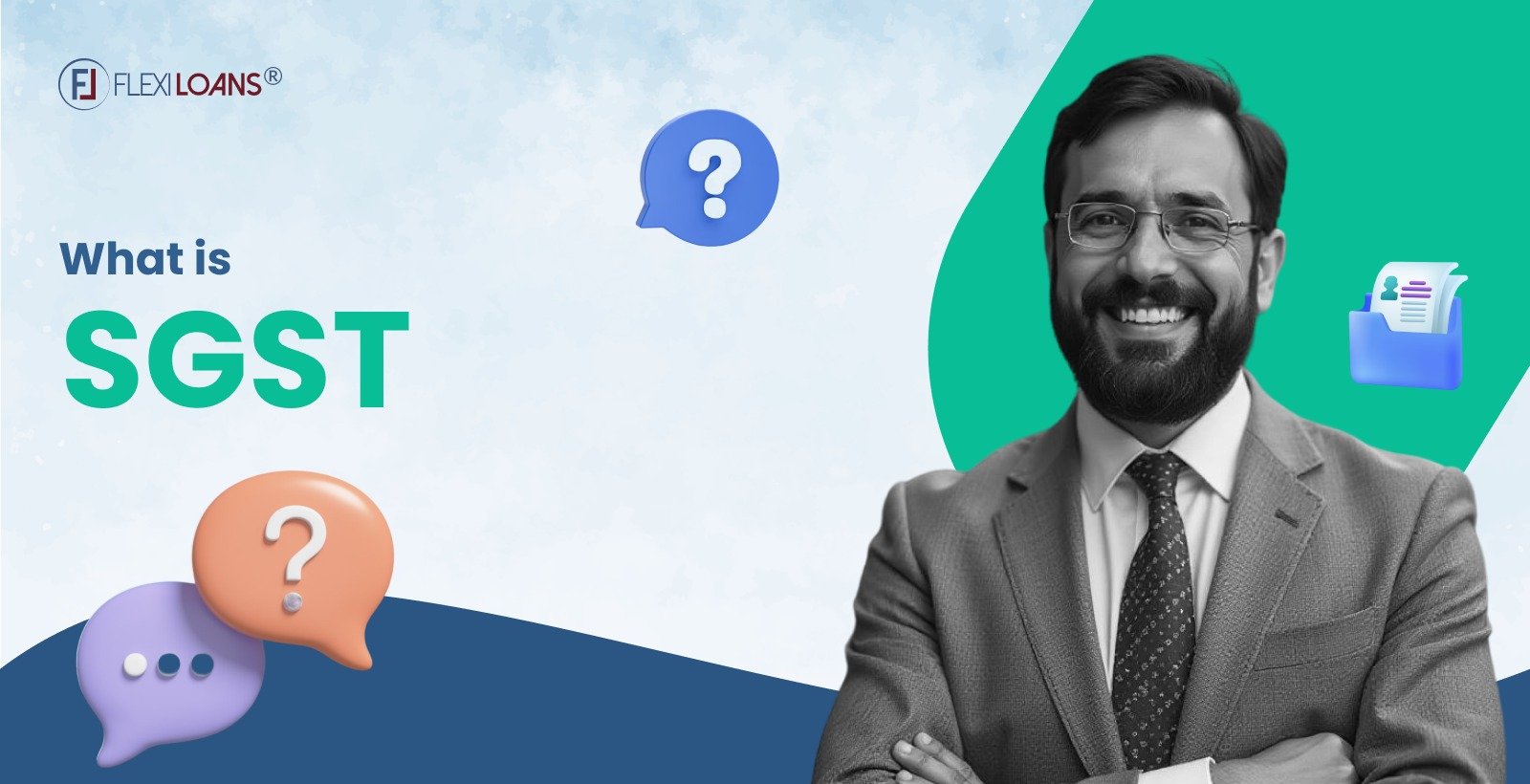Sep 30, 2024
Nov 28, 2025

What is the full form of SGST? State Goods and Services Tax (SGST) is a crucial component of India’s GST system. It isa tax levied by state governments on intra-state supplies of goods and services. On the other hand, CGST (Central Goods and Services Tax) is levied by the Central Government on intra-state supplies. This article provides a comprehensive overview on what is SGST, what are SGST and CGST, how they impact your business, and how business loans can help manage liquidity.
Application and Working of SGST
When goods or services are sold within a state, both SGST and CGST are charged. The seller collects SGST from the buyer on behalf of the state government and pays it to the respective state government. The buyer can claim input tax credit (ITC) for SGST paid on purchases and offset it against SGST or IGST payable on sales.
SGST vs CGST: Understanding the Difference
- Jurisdiction: The state government imposes SGST while Central Government imposes CGST on intra-state transactions.
- Revenue Distribution: SGST is collected by the respective states and CGST is collected by the Central Government.
- Utilisation: SGST is used by state governments for state-level public services, whereas CGST is utilised by the Central Government for nationwide projects and programs.
SGST Rates
The GST Council, which includes representatives from the Central and State governments, decides the SGST rates depending on the type of goods and services.
| SGST Rate | Applicable Goods / Services | Where It Is Levied |
|---|---|---|
| 0% | Essential goods (unprocessed food, grains, etc.) | Across all states basic necessities |
| 5% | Basic goods and services (clothing under ₹1,000, basic transport services, etc.) | Levied on commonly used goods in all states |
| 12% | Standard goods and services (processed food, computers, mobiles, etc.) | Applied in all states for moderately taxed goods |
| 18% | Standard / business services (financial services, restaurant services, etc.) | Uniformly levied across states on services and certain goods |
| 28% | Luxury goods (automobiles, luxury watches, etc.) | Imposed in all states for high-end products |
Precious metals like gold are taxed at a special rate of 3%.
Also Read About: What are the types of GST
SGST, CGST and IGST rates of some daily use items
| Item | SGST | CGST | IGST |
|---|---|---|---|
| Rice, wheat flour, milk, vegetables, salt, tea, coffee, pulses, lentils, bread, biscuits, cakes | 2.5% | 2.5 | 5 |
| Edible oil, soap, toothpaste, shampoo, toothbrushes, eggs, fish, meat, milk products (cheese, butter, yogurt), packaged drinking water | 5 | 5 | 10 |
| Basic electronic goods (fans, mixers, toasters) | 18 | 18 | 28 |
Advantages of SGST
- Eliminates cascading effect of taxes by providing input tax credit
- Reduces tax evasion through a transparent online system
- Increases efficiency by eliminating multiple taxes
- Provides more autonomy to states for collecting taxes
- Increases revenue for states for development and welfare
SGST Calculation
SGST is calculated on the transaction value, which includes the cost of goods, expenses like packaging and commission, and any non-GST taxes.
For example:
- Product cost: ₹1,000
- SGST rate: 9%
- SGST amount: ₹90
Total amount paid by buyer: ₹1,180 (₹1,000 base price + ₹90 CGST + ₹90 SGST)
Benefits of Business Loans in Managing Impact of SGST Expenses
As a business owner, it’s important to understand what is SGST and how it applies to your operations for proper compliance regulations and to avoid penalties. Adherence to GST guidelines also enhances your eligibility for business loans.
You can apply for business loans to manage cash flows and fund immediate financial requirements impacted by SGST payments. You can easily apply for online business loans with FlexiLoans. The streamlined digital process facilitates quick business loans with zero paperwork and limited credit history, thus enhancing customer experience. Effortlessly secure desired a business loan without collateral at favorable loan terms with FlexiLoans in just few clicks.
Conclusion
SGST is a critical component of India’s GST system that has simplified the indirect tax structure. It is charged on the taxable value of intra-state supply of goods and services which includes additional charges of freight, insurance and packaging. By understanding what is SGST, its rates and how it works, businesses can ensure proper compliance and avoid fines. If SGST payments are straining your business finances, consider a collateral-free business loan from FlexiLoans. With quick approvals and disbursals, FlexiLoans can help you navigate SGST with ease.
FAQs
SGST full form is State Goods and Services Tax.
SGST is a taxation collected by state governments on the supply of goods and services within their respective states.
SGST is state GST levied by state governments, while CGST is central GST levied by the Central Government. Both are charged on supply of goods and services within a state.
SGST rates are revised periodically based on government policies and economic conditions. The latest revision was upheld at the 39th GST council meeting in March 2020.
A small business loan can help bridge cash flow gaps, ensuring smooth operations and allowing you to meet immediate financial needs without disruption.
Deprecated: Function get_the_author was called with an argument that is deprecated since version 2.1.0 with no alternative available. in /var/www/html/wordpress/flexiloans.com/blog/wp-includes/functions.php on line 6114
Deprecated: Function get_the_author was called with an argument that is deprecated since version 2.1.0 with no alternative available. in /var/www/html/wordpress/flexiloans.com/blog/wp-includes/functions.php on line 6114







